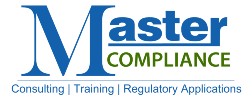In today’s culture, the utilization of social media for business purposes is becoming more and more commonplace and regular. You look at a Linked-In profile before scheduling someone for an interview. You follow FINRA and the SEC on Twitter and you review the Facebook page of Michael Bloomberg. Securities firms and their representatives are taking their business to social media, as well. However, before doing so, there are some important ramifications and requirements to consider.
Firms must adopt and implement reasonable means of supervision and related controls when employing social media and permitting representatives to utilize it for business purposes. This includes archiving all social media communications and posts, adequately supervising the content, and reviewing and revising your social media policies and procedures as needed.
- You Must Maintain Records
Similar to other forms of electronic communications, if a social media post constitutes a business communication, then SEC Rule 17a-4(b) applies and you must preserve and maintain the communication or social media post.
- You Must Supervise
Industry rules and best practices require firms to establish and maintain a system to supervise the activities of each associated person that is reasonably designed to achieve compliance with applicable federal securities laws and rules.
Before approving a social media site for use, firms should provide training to ensure that the firm’s associated persons fully understand and will comply with the applicable rules and firm policies regarding such communications. Firm should also establish a surveillance program to detect non-reported instances.
- You Must Be Careful when Posting 3rd Party Links
Firms may not establish a link to any third-party site that the firm knows or has reason to know contains false or misleading content. A firm should not include a link on its website if there are any red flags that indicate the linked site contains false or misleading content.
- You Must Spot Check your Data Feeds
Similar to 3rd party sites, data feeds provided by 3rd parties that are integrated with your social media platform must contain accurate information. Firms must adopt procedures to manage such data feeds. Aside from being familiar with the proficiency of the data provider, firms should also regularly inspect the data feeds for any red flags that indicate that the data may not be accurate and should promptly take necessary measures to correct inaccurate data.
- You Must Understand that “Suitability” Applies
When a firm or its registered representatives recommend a security through a social media site, FINRA Rule 2111 requirements regarding suitability are automatically triggered. Whether a particular communication constitutes a “recommendation” will depend on the facts and circumstances of the communication. Various social media sites include functions that make their content widely available or that limit access to one or more individuals. When determining suitability, be sure to keep in mind the scope of social media distribution. For example, if you have 1,000 followers on Twitter and you tweet a recommendation, that recommendation must be suitable for all of your followers.
Social media can be a great tool to help to generate publicity and business; however, firms must understand that the utilization of it for business purposes must be monitored, supervised and archived. It is not as simple as liking a post or re-tweeting!
For more posts related to communications with the public, please see Communications with the Public and FINRA Rule 2210: Communications.
